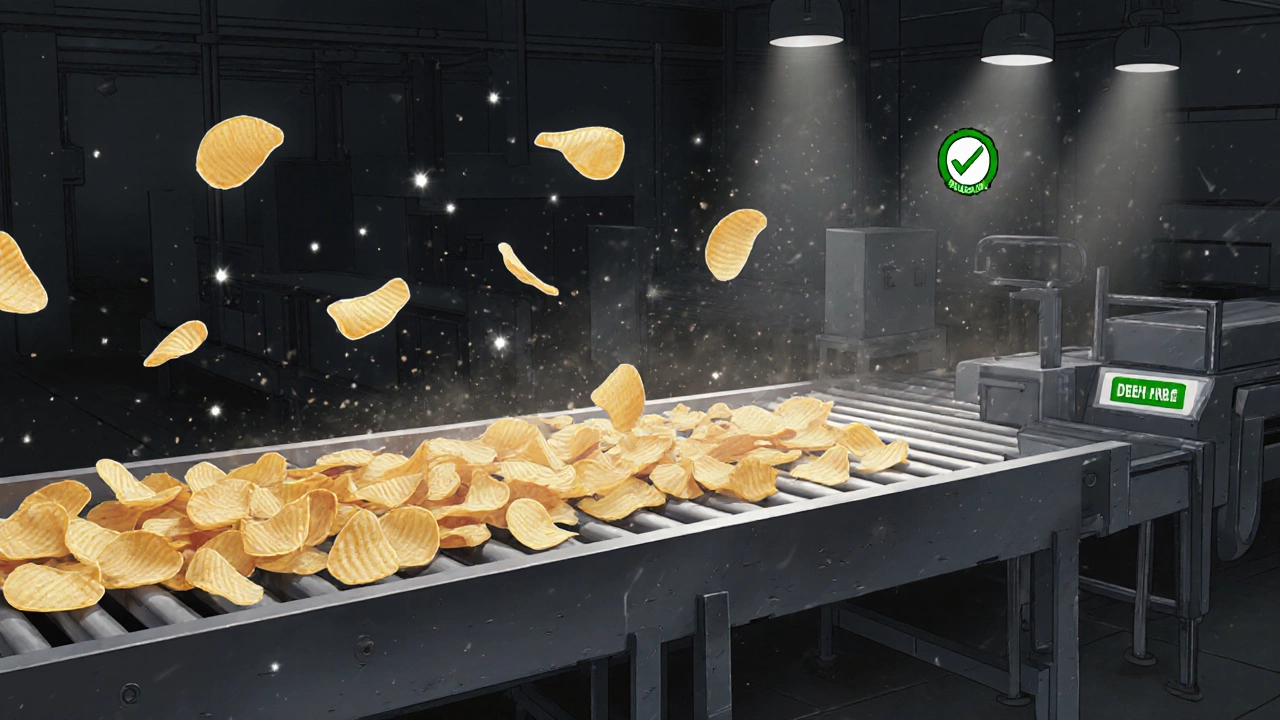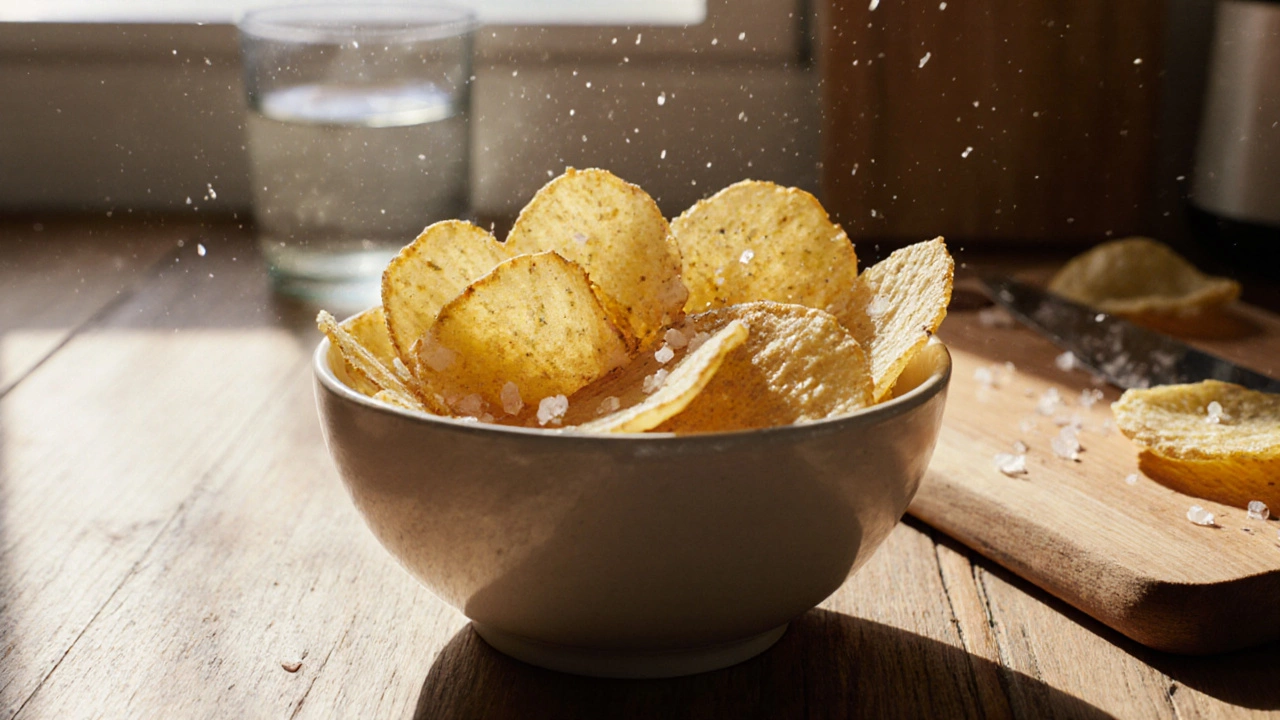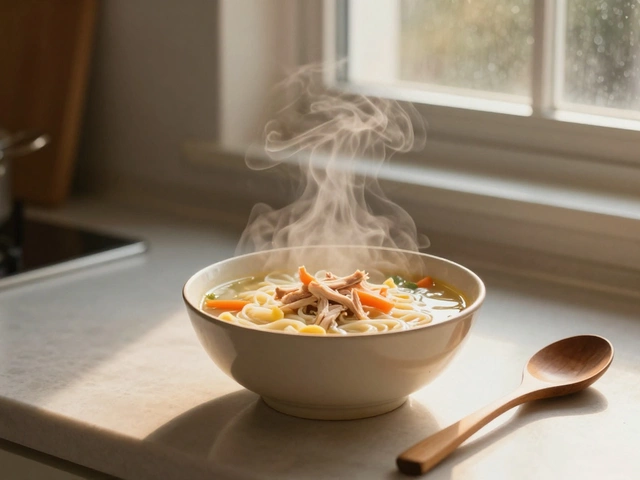Gluten-Free Chip Checker
Check if your favorite potato chip flavor is gluten-free. Based on FDA guidelines and industry standards, this tool identifies potential gluten sources in common chip flavors.
Key Takeaways
- Plain potato chips are naturally gluten‑free, but flavored varieties can contain hidden gluten.
- Cross‑contamination in factories is the biggest risk for people with celiac disease.
- Look for certified gluten‑free logos and read ingredient lists carefully.
- Common gluten‑containing ingredients in chips include wheat starch, malt flavoring, and soy sauce.
- Home‑made chips give you full control over gluten exposure.
When you reach for a bag of crispy snacks, the first question that pops into many people's heads is: are potato chips gluten‑free? The short answer is yes for plain, unflavored chips made from potatoes, oil, and salt. The longer answer dives into hidden ingredients, manufacturing practices, and the science of gluten. Below we break down everything you need to know so you can snack confidently, whether you have celiac disease, a gluten sensitivity, or just want to avoid gluten out of convenience.
Potato chips are thin slices of potatoes that are deep‑fried or baked until crisp. They are traditionally seasoned with salt, but modern manufacturers add a wide variety of flavors.
Gluten is a protein composite found in three cereal grains: wheat, barley, and rye. For people with celiac disease, even tiny amounts can trigger an autoimmune response.
Why Gluten Matters in Snacks
Gluten isn’t a concern for everyone, but for the estimated 1 % of the U.S. population with celiac disease and the additional 6 % who report non‑celiac gluten sensitivity, accidental exposure can cause digestive distress, fatigue, and long‑term intestinal damage. That’s why the Food and Drug Administration (FDA) set a strict threshold: a product must contain less than 20 parts per million (ppm) of gluten to be labeled “gluten‑free.”
Ingredients That Can Add Gluten
Even though the base of a chip is just potato, the seasoning mix is where gluten can sneak in. Here are the most common culprits:
- Wheat starch - used as a thickener or to improve texture.
- Barley malt - provides a sweet, toasty flavor in many cheese‑or BBQ‑type chips.
- Rye flour - rare but appears in some European‑style spice blends.
- Soy sauce or teriyaki sauce - many Asian‑inspired flavors contain fermented wheat.
- Seasoning mixes with maltodextrin - unless specified as corn‑based, maltodextrin can be wheat‑derived.
When you see any of these on the ingredient list, the chip is not gluten‑free.
Cross‑Contamination Risks
Even if a chip’s label says “gluten‑free,” the manufacturing environment matters. Factories that process both gluten‑containing and gluten‑free snacks on the same line can inadvertently transfer microscopic gluten particles.
Cross‑contamination occurs when gluten residue from a previous batch ends up in a supposedly gluten‑free product. Companies mitigate this by thorough cleaning, dedicated lines, or separate facilities.
Look for a gluten‑free certification logo (e.g., the GFCO stamp) because that indicates third‑party testing beyond the simple “may contain” disclaimer.

Reading Labels Like a Pro
Here’s a quick checklist to run through every time you scan a chip bag:
- Check the front of the package for a certified gluten‑free logo.
- Read the ingredient list for any of the gluten‑containing items listed above.
- Watch for statements like “processed in a facility that also handles wheat.” If you’re highly sensitive, treat that as a red flag.
- Verify the net weight and expiration date - older stock may have higher gluten levels due to packaging degradation.
Common Flavors and Their Gluten Status
| Flavor | Gluten‑Free? | Typical Gluten‑Containing Additives | Notes |
|---|---|---|---|
| Plain Salted | Yes | None | Most brands are safe. |
| Barbecue | Often No | Barley malt, wheat starch | Check brand‑specific label. |
| Sour Cream & Onion | Varies | Wheat flour (thickener), maltodextrin | Some brands use corn‑based thickeners. |
| Cheddar | Usually Yes | None | Look for natural cheese powders. |
| Sea Salt & Vinegar | Yes | None | Vinegar is safe; verify no malt. |
| Ranch | Often No | Wheat flour, buttermilk powder (may contain traces) | Certified gluten‑free versions exist. |
Homemade Alternatives for Absolute Control
If you want zero risk, making chips at home is easier than you think. All you need are potatoes, a good oil, and seasoning you trust.
Cooking oil (such as canola, avocado, or peanut) provides the heat transfer needed for a crisp finish without adding gluten.
Here’s a simple recipe:
- Wash and thinly slice 2 large russet potatoes (about 1 mm thickness).
- Soak slices in cold water for 15 minutes to remove excess starch.
- Pat dry, then toss with 1 tbsp olive oil and a pinch of sea salt.
- Arrange in a single layer on a parchment‑lined baking sheet.
- Bake at 425°F (220°C) for 12‑15 minutes, flipping halfway.
- Optional: add gluten‑free herbs like rosemary or smoked paprika after baking.
Because you control every ingredient, you eliminate hidden gluten and can experiment with flavors safely.

What About “Gluten‑Free” Claims on the Shelf?
The FDA allows products with less than 20 ppm gluten to bear the “gluten‑free” label, but the law also permits “may contain” warnings. Some brands voluntarily label “certified gluten‑free” after third‑party testing, which adds a layer of trust.
For people with severe celiac disease, a “gluten‑free” claim alone isn’t enough. Choose products with a certified logo or contact the manufacturer for testing details.
Top Recommended Gluten‑Free Chip Brands (2025)
Based on ingredient transparency, certification, and consumer reviews, these brands consistently score high for gluten‑safety:
- Kettle Brand - Sea Salt: Certified gluten‑free, plain and simple.
- Pop‑Side - Sweet Chili: Uses corn‑based thickeners, no wheat.
- Good Health - Original: Made from real potatoes, no additives.
- Late July - Sweet Potato: Naturally gluten‑free, baked not fried.
Always double‑check the latest label, as recipes can change.
Frequently Asked Questions
Can flavored potato chips be gluten‑free?
Only if the flavoring blend contains no wheat, barley, or rye derivatives and the product is made in a gluten‑free facility. Always read the ingredient list and look for a certified gluten‑free logo.
What does ‘may contain wheat’ mean?
It’s a warning that the product was processed on equipment that also handles wheat. For people with celiac disease, this warning suggests a risk of cross‑contamination, so it’s safest to avoid.
Is there a reliable test for gluten in chips?
Third‑party labs use ELISA testing to measure gluten content. Brands that display the GFCO (Gluten-Free Certification Organization) seal have passed such tests.
Can I eat chips at a restaurant if I’m gluten‑free?
Ask the staff how the chips are prepared. Some places fry chips in the same oil as breaded items, which can cause cross‑contamination. Opt for clear gluten‑free labels or bring your own.
Do baked chips have a lower gluten risk?
Baking doesn’t inherently remove gluten. The risk still depends on the ingredients and manufacturing process. Choose baked chips that are certified gluten‑free.
Bottom line: plain, plain‑salted chips are a safe bet, but once you start adding flavors, always verify ingredients and manufacturing claims. When in doubt, make your own or stick with certified brands. Your gut will thank you.





